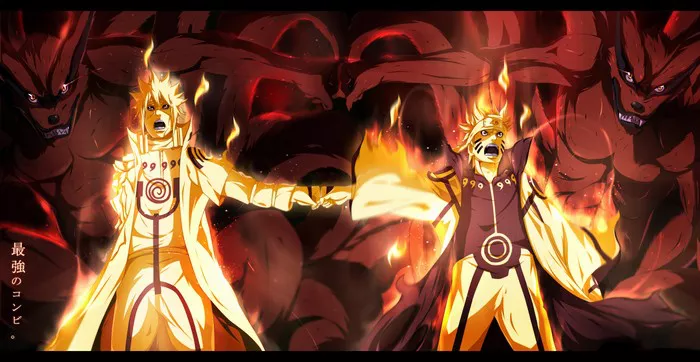In the expansive realm of anime, few battles have captured the imagination and stirred the emotions of fans quite like the epic showdown between Pain and Naruto in the acclaimed series “Naruto.” This iconic confrontation, which occurs during the “Pain’s Assault” arc, is a pivotal moment in the narrative, marking a dramatic turning point for the titular character and the world of ninjas. In this comprehensive analysis, we delve deep into the heart of “Pain vs. Naruto,” exploring its significance, impact, and enduring legacy.
The Prelude to Conflict: Setting the Stage
Before delving into the intricacies of the battle itself, it’s essential to understand the events leading up to “Pain vs. Naruto” within the context of the “Naruto” series. The story unfolds in the Hidden Leaf Village, where Naruto Uzumaki, a young ninja with dreams of becoming Hokage, the leader of the village, finds himself facing off against the enigmatic and powerful figure known as Pain.
Pain, also known as Nagato, is the leader of the criminal organization known as the Akatsuki, whose ultimate goal is to bring about world peace through drastic means. Utilizing the power of the Rinnegan, a legendary eye technique, Pain possesses formidable abilities and commands an army of deadly warriors known as the Six Paths of Pain.
As the series progresses, Pain launches a devastating assault on the Hidden Leaf Village, unleashing destruction and chaos in his quest to capture Naruto and obtain the power of the Nine-Tails, a powerful tailed beast sealed within Naruto since birth. The stage is set for an epic showdown between two formidable adversaries, each fighting for their own ideals and beliefs.
The Clash of Ideologies: Naruto’s Journey of Redemption
At its core, “Pain vs. Naruto” is not just a physical battle but a clash of ideologies and beliefs. Throughout the series, Naruto grapples with themes of loneliness, loss, and the desire for acceptance and recognition. As an outcast and orphan, Naruto yearns to prove himself to others and fulfill his destiny as a hero.
On the other hand, Pain represents a darker path, one marked by pain, suffering, and the belief that peace can only be achieved through absolute power and control. Having experienced immense loss and tragedy in his past, Pain seeks to impose his vision of peace upon the world, regardless of the cost.
As the battle unfolds, Naruto is forced to confront his own inner demons and insecurities, coming face to face with the harsh realities of the ninja world. Through his encounters with Pain and his followers, Naruto undergoes a profound transformation, ultimately emerging stronger, wiser, and more determined than ever to protect his friends and village.
The Anatomy of Battle: Deconstructing the Conflict
The battle between Pain and Naruto is a masterclass in storytelling and choreography, blending intense action with emotional depth and character development. Here are some key elements that define the epic confrontation:
Strategic Warfare: Unlike many battles in “Naruto,” which rely solely on brute force and flashy techniques, the clash between Pain and Naruto is characterized by strategic planning and tactical maneuvering. Each combatant employs a combination of intelligence, deception, and teamwork to gain the upper hand.
Powerful Techniques: Throughout the battle, both Pain and Naruto showcase their formidable abilities, unleashing a barrage of devastating attacks and techniques. From Pain’s mastery of the Rinnegan to Naruto’s utilization of the Nine-Tails’ chakra, the combatants push themselves to their limits in a bid for victory.
Emotional Resonance: What sets “Pain vs. Naruto” apart from other battles is its emotional resonance and depth. As the battle rages on, Naruto confronts Pain not just as a foe but as a fellow human being, grappling with the moral complexities of violence, revenge, and redemption.
Character Growth: The battle serves as a catalyst for profound character growth and development, not just for Naruto but for Pain as well. As the two warriors clash, they are forced to confront their own beliefs, motivations, and flaws, ultimately leading to moments of introspection and revelation.
The Aftermath: Reflection and Redemption
In the aftermath of the battle, the true impact of “Pain vs. Naruto” becomes clear. The Hidden Leaf Village lies in ruins, its inhabitants reeling from the devastation wrought by Pain’s assault. Yet amidst the destruction, seeds of hope and renewal are sown, as Naruto emerges victorious and begins the arduous task of rebuilding and healing.
For Naruto, the battle represents a crucial step in his journey of redemption and self-discovery. Through his encounter with Pain, Naruto learns valuable lessons about empathy, compassion, and the true meaning of strength. He emerges from the conflict not just as a hero but as a symbol of hope and resilience for his friends and allies.
As for Pain, the battle serves as a moment of reckoning and reflection. Confronted with the consequences of his actions and the pain he has caused, Pain experiences a change of heart, ultimately choosing to atone for his sins and seek redemption in death.
The Enduring Legacy: Impact and Influence
More than a decade after its initial release, “Pain vs. Naruto” continues to resonate with fans of “Naruto” and anime enthusiasts worldwide. Its powerful themes, gripping storytelling, and dynamic action have cemented its status as one of the most iconic and memorable battles in anime history.
Beyond its entertainment value, “Pain vs. Naruto” serves as a testament to the enduring power of storytelling to inspire, provoke thought, and evoke emotion. Its exploration of complex themes such as morality, redemption, and the nature of heroism elevates it beyond mere spectacle, making it a timeless and impactful work of art.
In conclusion, “Pain vs. Naruto” is not just a battle; it’s a transformative experience that leaves a lasting impression on those who witness it. With its richly drawn characters, gripping narrative, and stunning animation, it stands as a shining example of the storytelling prowess of “Naruto” and the enduring legacy of anime as a medium.

